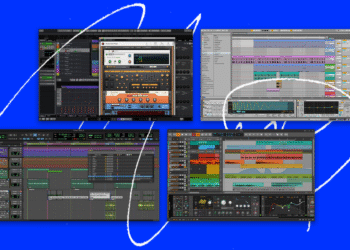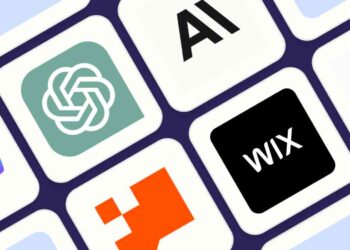AI-powered content curation has changed the way businesses, marketers, and content creators approach audience engagement.
But here’s the real question—how do you know if it’s actually working? Sure, AI can generate, recommend, and personalize content, but if you’re not tracking the right metrics, you’re shooting in the dark.
Measuring AI-powered content curation isn’t just about checking traffic numbers. It’s about understanding engagement, conversion rates, relevance, and long-term impact. Let’s break it down and explore how you can accurately measure the success of your AI-driven content strategy.
1. Engagement Metrics: Are People Actually Interacting with AI-Curated Content?
The first sign of effective AI-powered content curation is engagement. If AI-generated recommendations or curated articles aren’t keeping people on your site or social channels, something’s off.
Here’s what to track:
- Time on Page: If visitors spend more time reading AI-curated content, it’s a good sign it’s relevant. If they leave quickly, AI might be missing the mark.
- Scroll Depth: Are users scrolling through the entire article or bouncing halfway? AI should be selecting content that holds attention.
- Click-Through Rate (CTR): If AI-curated content in emails, social media, or websites is getting high CTRs, it means it’s catching interest.
- Social Shares & Comments: AI-powered recommendations should spark discussions and sharing. If no one is engaging, the content might be too generic.
Quick Tip: Use heatmaps (like Hotjar or Crazy Egg) to see how users interact with AI-powered content. If they abandon the page quickly, the AI needs better data training.
2. Traffic Growth: Is AI Bringing More Visitors?
AI content curation should contribute to increased traffic—especially organic traffic and referral traffic.
- Organic Traffic: If AI-curated content includes SEO-friendly keywords and improves search rankings, it should bring more organic visitors.
- Referral Traffic: AI-powered content recommendations should drive users to other relevant pages, reducing bounce rates and increasing page views.
If your AI-generated content isn’t bringing in more traffic, it might not be optimized for SEO or user intent.
Pro Tip: Track traffic trends in Google Analytics and use tools like SurferSEO or NeuronWriter to ensure AI-generated content aligns with high-ranking search queries.
3. Conversion Rates: Is AI Content Turning Readers into Customers?
Engagement and traffic mean nothing if visitors don’t convert. AI-powered content should guide users through the buyer’s journey and lead to measurable actions like:
- More Email Sign-Ups: Is AI-curated content encouraging newsletter subscriptions?
- Higher Click-Through Rates on CTAs: AI-generated recommendations should drive users to the next step, whether it’s booking a demo or making a purchase.
- Increased Purchases: If AI-powered product recommendations lead to higher sales, that’s a clear win.
If AI-generated content isn’t improving conversions, test A/B variations with different AI-driven recommendations to see what works best.
4. Relevance & Accuracy: Is AI Picking the Right Content?
AI is only as good as the data it’s trained on. If it’s curating irrelevant content, you’ll lose audience trust.
To measure relevance:
- User Feedback & Ratings: Allow users to rate AI-generated recommendations to gauge accuracy.
- Sentiment Analysis: Tools like Crimson Hexagon or BuzzSumo can analyze audience sentiment on AI-powered content.
- Bounce Rate: If AI-recommended content isn’t resonating, visitors will leave quickly.
Quick Fix: Regularly fine-tune AI algorithms by feeding them high-quality, updated content data. If the AI isn’t learning, it’s not improving.
5. SEO Performance: Is AI Helping You Rank Higher?
AI-powered content should improve search visibility over time. Here’s what to check:
- Keyword Rankings: Are AI-curated articles ranking for target search terms?
- Backlinks: Are other sites linking to AI-generated content? More backlinks = higher authority.
- Featured Snippets: Is AI-driven content getting into Google’s featured snippets? That’s a major SEO win.
Use Google Search Console and SEO tools like Ahrefs or SEMrush to analyze how AI-powered content is influencing your rankings.
6. Personalization Effectiveness: Is AI Learning & Adapting?
One of AI’s biggest strengths is personalization—but is it actually improving the user experience?
Track:
- Returning Visitors: Are users coming back because AI content feels tailored to them?
- Behavioral Adaptation: Does AI adjust recommendations based on user behavior?
- User Segmentation Metrics: Are different audience segments responding well to AI-driven content suggestions?
If AI isn’t adapting to user behavior, it’s time to refine the machine learning model to improve personalization.
7. ROI & Business Impact: Is AI Worth the Investment?
At the end of the day, AI-powered content curation should lead to tangible business results.
Measure:
- Time & Cost Savings: Is AI reducing content creation workload?
- Lead Generation: Are AI-powered articles bringing in more leads?
- Revenue Growth: Is AI-curated content translating into higher sales?
If AI is increasing efficiency while improving audience engagement, then it’s delivering real ROI. If not, re-evaluate how AI is integrated into your content strategy.
Final Thoughts: Keep Testing & Optimizing AI-Driven Content
AI-powered content curation isn’t a set-it-and-forget-it solution. To truly measure its effectiveness:
✅ Track engagement, traffic, and conversions
✅ Ensure AI is curating relevant & personalized content
✅ Analyze SEO impact and ranking improvements
✅ Evaluate business ROI and content production efficiency
If AI isn’t performing, adjust, retrain, and refine the algorithms to improve results. Keep testing, measuring, and optimizing to maximize AI’s potential in content curation.








